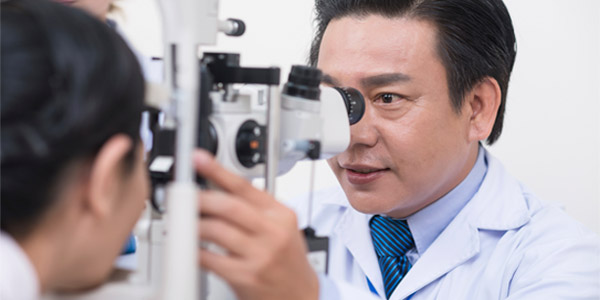You may encounter vision problems at any time of life, from birth through advanced age. Whether you're nearsighted or need care for cataracts, expert centers with ophthalmologists and optometrists across the Sutter Health network offer the latest in vision care. We provide precision diagnostics, advanced treatments and a strong commitment to research to improve and maintain your sight.

Eye specialists treat the entire family, providing therapies and procedures to correct many common and rare problems, including:
- Cataracts
- Poor Vision
- Lazy Eye
- Retinal Detachment
- Corneal Injury and Transplant
- Macular Degeneration
- Diabetic Retinopathy
- Glaucoma
- Stroke or Brain Injury Vision Loss
Vision issues occur more commonly after age 40, so we strive to help you preserve your eyesight through regular checkups and management of risk factors, such as diabetes and thyroid problems. If your sight becomes impaired, we can help you maximize your vision and maintain independence.
Our first goal is to care for you in the best way possible using preventative and medical treatments. Should you need surgery, an ophthalmologist within the Sutter Health network can offer leading-edge, sight-saving surgery technologies and treatments, including:
- Cataract Surgery — An outpatient procedure to remove a crystalline lens and replace it with an artificial, intraocular lens.
- Corneal Transplant — One of the most common transplant surgeries, it replaces a damaged cornea on the surface of the eye with a donor cornea.
- Glaucoma Treatments — These treatments reduce intraocular pressure with either laser or traditional techniques.
- LASIK — Laser eye surgery to correct myopia and astigmatism, reducing the need for eyeglasses and contact lenses.
- Oculoplastic Procedures — Surgical treatments for the eye socket, eyelids, tear ducts and face, including blepharoplasty, repair of orbital fractures and tumor removal, and eyelid-enhancing and cosmetic eyelid surgery.
- Strabismus Surgery — Treatment for eye muscles to repair misalignment of the eyes and double vision.
The Frank Stein and Paul S. May Center for Low Vision Rehabilitation at California Pacific Medical Center, a Sutter Health affiliate, offers specialty services for low vision.
The Munnerlyn Eye Institute at the Palo Alto Medical Foundation offers a full range of ophthalmology and optometry services, including specialty services, for people of all ages. This beautiful, new institute was made possible in part by a gift from Charles Munnerlyn, Ph.D., and Judith Munnerlyn. Charles Munnerlyn is one of the founding fathers of laser vision correction.














